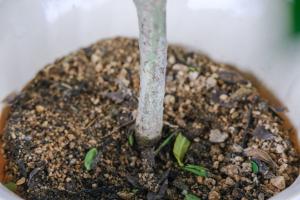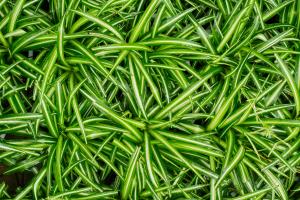Introduction
Rubber plants are a popular addition to indoor gardens. These plants are known for their attractive glossy leaves and ability to grow in a variety of conditions. In this article, we will explore the benefits of keeping rubber plants indoors.
Benefits of Growing Rubber Plants Indoors
1. Air Purification: Rubber plants are excellent natural air purifiers. These plants absorb pollutants and toxins present in the air, helping to maintain a healthy environment in your home or office.
2. Oxygen Production: Rubber plants are also efficient oxygen producers. This means that they can help improve air quality in your home or office by increasing oxygen levels.
3. Low Maintenance: Rubber plants are relatively easy to care for and require minimal maintenance. They do not need to be watered frequently and can tolerate a variety of light conditions.
4. Aesthetic Appeal: Rubber plants have a unique and attractive appearance that can add to the visual appeal of your indoor garden. These plants have large, glossy leaves that can add a touch of elegance to any space.
5. Health Benefits: Research has shown that being in the presence of green plants has a positive impact on mental health. Keeping rubber plants in your indoor garden can help reduce stress and promote relaxation.
How to Care for Rubber Plants
1. Lighting: Rubber plants thrive in bright, indirect light. They should be placed near a window, but not in direct sunlight.
2. Watering: Rubber plants need to be watered when the top inch of soil is dry. Overwatering can lead to root rot, so it is important to allow the soil to dry out between waterings.
3. Humidity: Rubber plants prefer a humid environment. You can increase humidity by placing a tray of water near the plant or using a humidifier.
4. Fertilizer: Rubber plants should be fertilized once a month during the growing season (spring and summer). Use a balanced fertilizer and follow the package instructions.
5. Pruning: Rubber plants can grow quite tall, but they can be pruned to maintain a more manageable size. Cut back any unwanted branches or leaves to encourage new growth.
Common Problems
1. Overwatering: Overwatering can cause root rot and damage the plant. Allow the soil to dry out between waterings and don't let the plant sit in standing water.
2. Underwatering: Underwatering can cause the leaves to wilt and drop. Make sure to water the plant when the top inch of soil is dry.
3. Pests: Rubber plants are relatively pest-resistant, but they can occasionally be susceptible to spider mites, mealybugs, and scale insects. Use an insecticidal soap to control pests.
4. Yellowing Leaves: Yellowing leaves can be a sign of overwatering or underwatering. Check the soil moisture and adjust your watering accordingly.
Conclusion
In conclusion, rubber plants are an excellent addition to any indoor garden. These plants offer a range of benefits, including air purification, oxygen production, low maintenance, aesthetic appeal, and health benefits. With proper care, rubber plants can thrive in a variety of conditions and provide years of beauty and enjoyment.

 how many times do yo...
how many times do yo... how many planted tre...
how many planted tre... how many pine trees ...
how many pine trees ... how many pecan trees...
how many pecan trees... how many plants comp...
how many plants comp... how many plants can ...
how many plants can ... how many plants and ...
how many plants and ... how many pepper plan...
how many pepper plan...































